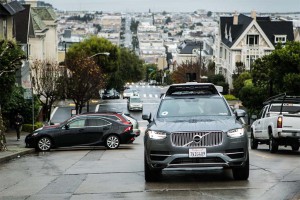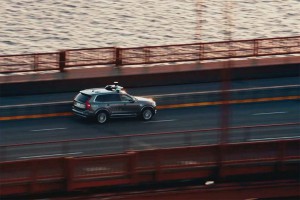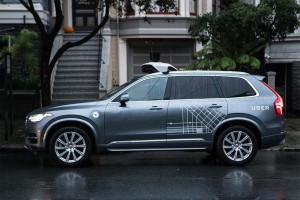Uber is expanding its autonomous vehicle pilot program to San Francisco – though the move could run afoul of California regulators since the ride-sharing service has decided not to seek a permit for the project.
Today’s launch comes three months after Uber began testing self-driving vehicles in its hometown of Pittsburgh. The company has said that it eventually wants to jump past autonomous cars and put a fleet of fully driverless vehicles on the road, something it says would lower the cost of a ride to the point where hailing an Uber would be cheaper than the cost of owning a vehicle.
“The promise of self-driving ride sharing is becoming a reality,” said Mårten Levenstam, vice president of product planning at Volvo Cars, which is providing the vehicles being used for the San Francisco pilot. “Volvo is proud to be at the forefront of the latest developments in the automotive world alongside our partners at Uber.”
(Google, FCA plan to launch autonomous ride-sharing pilot program. Click Here for more.)
Volvo has been pushing forward with its own autonomous vehicle program and will be testing a fleet of self-driving cars in its own home town of Gothenburg over the next several years. The Swedish carmaker is making semi-autonomous technologies, such as forward collision warning with automatic emergency braking, standard equipment on a wide range of its upcoming models.
For the moment, Uber plans to run a “handful” of autonomous Volvos XC90 SUVs in San Francisco, hoping to gain more experience operating the technology on the city’s typically traffic-snarled streets. Initial reports suggested the cars experienced some minor issues during their first day of operation, sometimes stopping at the wrong location or failing to swerve around a blocked lane, requiring the intervention of the human “operator” stationed behind the wheel in case of an emergency.
Federal and California state guidelines both require a trained operator to be ready to take over, if and when needed. But while the Golden State’s recently enacted autonomous vehicle guidelines specifically calls for a commercial operator to get a permit, Uber said it doesn’t believe that is required, setting the stage for a potential legal battle – something the company has gotten used to, often battling state and local regulators in the U.S. and abroad who have, at times tried to block ride-sharing services.
“This is where science and logic needs to trump blind compliance.” Anthony Levandowski, the head of Uber’s self-driving program, told the Associated Press.
The state’s Department of Motor Vehicles has said that 20 other companies have received permits to test autonomous vehicles in California, a list including Google, which has been operating a fleet of test vehicles and shuttles near its Silicon Valley headquarters.
“Uber shall do the same,” said a DMV statement, suggesting a legal battle could follow.
It is unclear whether the ride-sharing service would follow state guidelines, should it continue operating without a permit. These require, among other things, that an operator of autonomous vehicles obtain a $150 permit and then report any incidents involving those cars, including not only crashes but instances where the human operator was required to intervene.
Each of the XC90s Uber is operating in San Francisco has been modified with an array of radar and other sensors, as well as much more accurate mapping data than that typically used by in-vehicle navigation systems.
“We expect the majority of these rides to take place in self-driving mode,” Lewandoski said, though he acknowledged the technology “is not totally read” to operate autonomously at all times.
California is one of about a half-dozen states that have now established some form of rules covering testing of autonomous and, in some cases, fully driverless vehicles. The U.S. Department of Transportation has also released the first federal guidelines, including model state regulations.
(Toyota invests in car-sharing start-up. Click Here for the story.)
Mark Rosekind, the head of the National Highway Traffic Safety Administration, has said that such high-tech vehicles could eventually lead to the virtual elimination of crashes, injuries and deaths on U.S. highways.
Earlier this week, NHTSA and the DoT also announced proposed rules that would require all new vehicles come equipped with vehicle-to-vehicle, or V2V, technology within five years. That would allow them to “talk” to one another, sharing location, speed and direction.
Transportation Secretary Anthony Foxx said “It has been estimated that up to 80% of non-impaired collisions could be avoided or mitigated to reduce injuries” using V2V technology which, he added, would also improve the functionality of tomorrow’s autonomous and driverless vehicles.
(Is that taxi or ride-share vehicle safe? Maybe not, Click Here for the story.)



